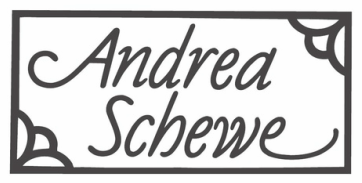I consulted with three costuming friends for help compiling this list, one on the west coast, Lisa Logan, one in the mid-west, Sheila Lenkman and my New York costuming buddy, Martha McCain. There are some regional variations.
To start off there is the
SHOP HEAD -
bids the shows, has the meetings with the designer – not to mention schmoozing, hires and fires, assigns sketches to the drapers, looks at all the swatches and samples the shoppers brings in (tells the designer she can't have $200 yard fabric ... hand beaded), charms the actors in the fitting room while the drapers stick pins. Serves tea to same, attends dress rehearsals and holds the designer's hand, goes out of town with a show for preview for example.
OFFICE MANAGER-
payroll, dispatches shoppers, keeps track of petty cash, creates the bible (more on that in a future blog), keeps records so costumes can be reproduced during a long run, orders mundane things like shop supplies (brown paper, muslin, safety pins…), arranges for the costumes to be delivered to the theater, feeds the cat, waters the plants
DRAPER (Cutter in Canada) -
Interprets the designer's sketch into 3-D, needs to know a lot about fashion history and sound costume construction, makes patterns (could be draping or flat pattern making), fits actors and supervises the construction.
FIRST HAND
- a draper’s assistant, cuts out draper's patterns, does lesser patterning job (making facing, etc), also supervises stitchers and finishers and does pretty much whatever the draper needs. From Sheila (First Hand: In some theatres they are also the cutters and do all the prep work, such as preparing fabrics, gathering notions and trims, etc. They can also supervise and organize the alterations.
STITCHER (on the west coast called "draper" ... confusing!)
- operates machines only in some shops, in others does all aspects of garment construction some places also does alterations
FINISHER
- prepares work for the stitcher, pins garment pieces together, trims seam, presses and does all hand sewing
PRESSER
- from Lisa ("Zen Iron Maiden" at a New York shop named Matera's. There was, apparently, a woman whose only job was pressing. I guess she went into a meditative "zone" when she was working, hence the nickname. San Francisco Opera had a delightful old lady who had worked there since forever, and her job, too, was nothing but pressing. So I don't know if that's a category of job common to larger shops or not.
TAILOR
- makes men’s wear primarily
MILLINER
- Makes hats
BEADING LADIES
- I don’t know if shops have this any more, but back in the 70s and 80s there were women who sat all day in front of rectangular frames balanced between 2 saw horses and hand beaded panels of garments using the tambor beading method. This from Lisa (I suspect that Eric Winterling has beading ladies. He just posted a photo of some beaded work in progress. I do remember hearing that it was cheaper to fly someone to Haiti, fabric in hand, to wait for a piece to be beaded, and then fly it back. I wouldn't have minded that job, although it was before the earthquake. I wonder if that's still done. And I remember another story about the beading ladies being so old, and so important, that when there was a NYC transportation strike, limos were dispatched to drive them to work. And at Michael-Jon's where they had to find special stools with wider bases at the bottom, because one of the old ladies kept tipping over. Talk about a "dying art" ...)
SHOPPER
- often an entry level job, this person shops for stuff, mainly getting fabric swatches so the designer and draper can choose the best fabrics, BUT, this from Martha ...
(Entry level, maybe. Shoppers often are recently-graduated designers who go on to fame and fortune. (Marty Pakledinaz for example.) It takes a good eye and a user-friendly personality – also young feet and a strong back. Don't forget that shoppers often carry around a lot of shoes.)
PAINTER/DYER
- dyes fabrics, paints on designs and distresses costumes (makes them look worn)
CRAFTS ARTISAN
- responsible for shoes, socks, underwear, jewelry, accessories, etc. They will also work in tandem with the costume shop, sharing fabrics, trim, etc as needed. In some shops this person will do the dying and painting as well as millinery, jewelry, footwear, armor, foam structures, mechanical costume pieces, masks, belts, and weapon rigging. (But see, in New York the shoes were obtained by the shopper!)
OVER HIRE - this is when some is brought in on a temporary basis when there is a lot of work or if someone in the shop is doing an outside job. This is not a term heard much in New York where most people who work in costume shops come and go as the costume work comes and goes between shops.
But … at Ray Diffen’s shop, back when I worked there outside jobs were called “an Underwater Nun” and no one seems to remember why that is.
In future blogs I plan to talk about how costumes are "built" for the theater. This is another kind of sewing all together ... very interesting!




 RSS Feed
RSS Feed